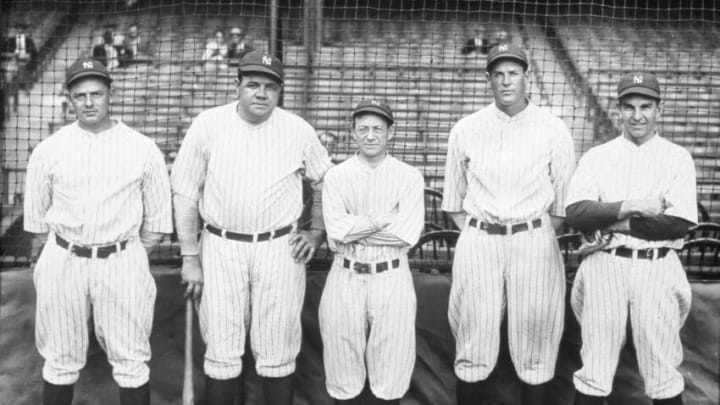
1920: The Johnstons
In the summer of 1920, Wheeler “Doc” Johnston held down first base for the Cleveland Indians. Johnston was a 33-year-old veteran in his eighth full major league season. If not one of Cleveland’s stars — the Indians, after all, had Tris Speaker and 31-game winner Jim Bagby — Johnston was a solid left-handed hitting offensive threat, who would run up a .292 batting average with 71 RBI in 147 games.
Born Sept. 9, 1887 in Cleveland, Tenn., Johnston was not, however, the only member of his family to reach the majors. In 1914, younger brother Jimmy Johnston debuted with the Chicago Cubs. Two years later, he was purchased by the Brooklyn Dodgers, arriving in Flatbush just in time to contribute to Brooklyn’s first National League championship.
The Dodgers lost the 1916 series to Boston in five games, but Jimmy emerged as a star in the process. He batted .300 — second on the team to Casey Stengel. Unlike his brother, a confirmed first baseman, Jimmy was a model of versatility. Between 1916 and 1920, he started 149 games at third base, 125 in right field, 93 in center field, 87 at second base, 65 in left field, 32 at first base, and four at shortstop.
Jimmy’s Dodgers returned to the World Series in October of 1920, seizing the league lead in early July and coasting home seven games ahead of the Giants. Wheeler’s Indians had the tougher haul, emerging from a sensational three-way race that also featured the defending champion Chicago White Sox and the New York Yankees, whose new star, Babe Ruth, hit 54 home runs.
Through the final month of the American League race, the Indians never led by more than their final two-game margin over the White Sox. They also benefitted by the final-week suspension of seven of Chicago’s stars on suspicion of having fixed the previous October’s World Series.
When the brothers met for what was planned as a best-five-of-nine series, Jimmy’s Dodgers won two of the first three. But Jimmy injured a knee running the bases in Game 4 and was pulled, not appearing again in the Series.
The next afternoon’s Game 5, an 8-1 Cleveland win, remains one of the most historic in World Series history, although not for anything either of the Johnston brothers did. In the first inning, Indians outfielder Elmer Smith hit the first grand slam in World Series history. In the fourth, Bagby became the first pitcher to homer in the World Series. Then in the fifth, Cleveland second baseman Bill Wambsganss turned the only unassisted triple play in Series history.
With Jimmy nursing his injured knee and watching helplessly from the dugout, Doc delivered two base hits and scored ahead of Bagby on the pitcher’s home run. Two days later, Doc’s Cleveland team wrapped up the Series title.
Both Johnstons enjoyed full major league careers. Doc was back at first base for Cleveland in 1921, hitting .297 before being waived to Connie Mack’s Athletics in February of 1922. He retired at season’s end and died in 1961.
Jimmy continued to be a versatile fixture in Brooklyn and a Flatbush favorite lineup through 1925. Traded to the Boston Braves at that season’s end, he finished up with the New York Giants, leaving with a career .294 average. Jimmy died in 1967.
